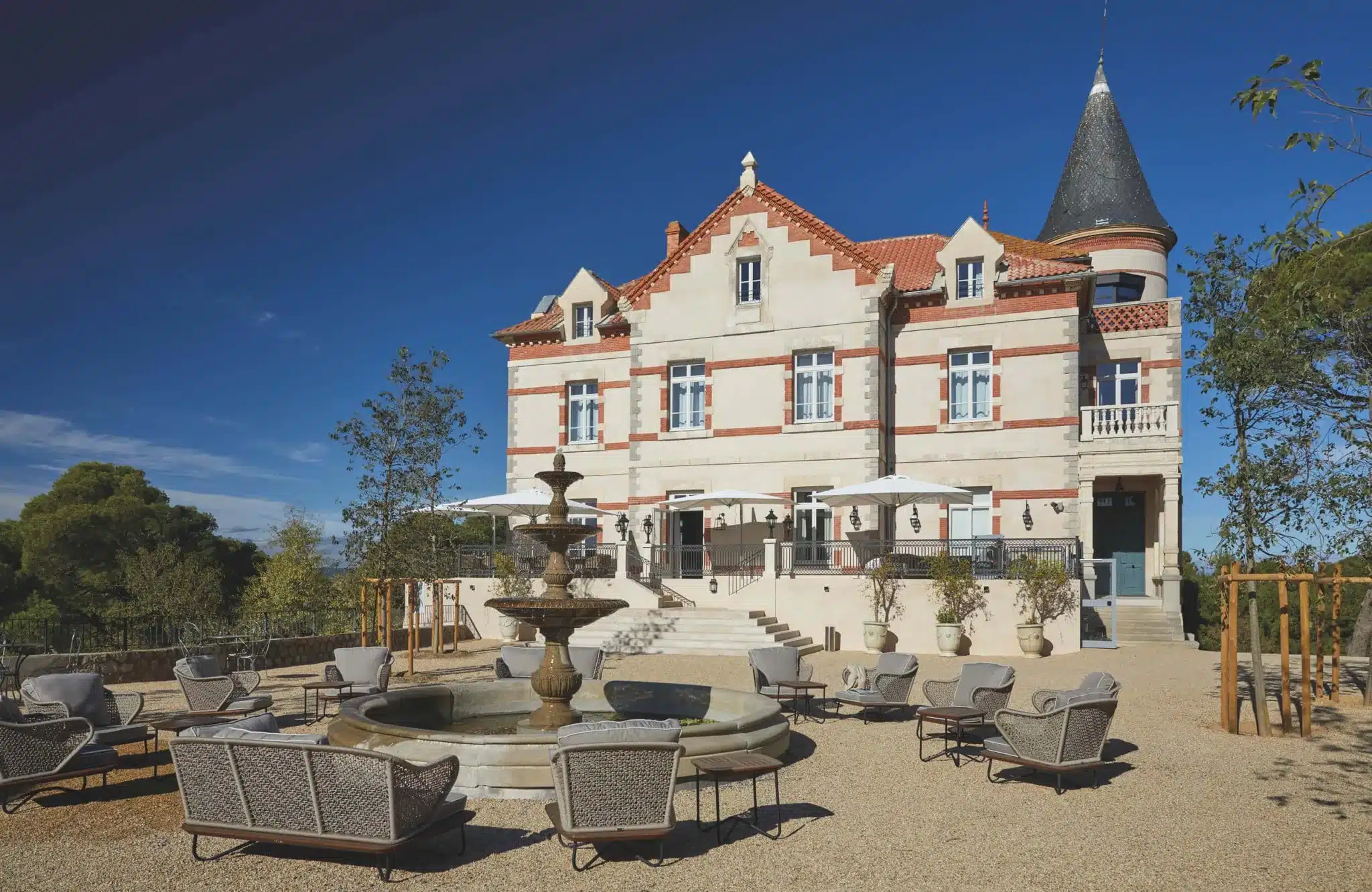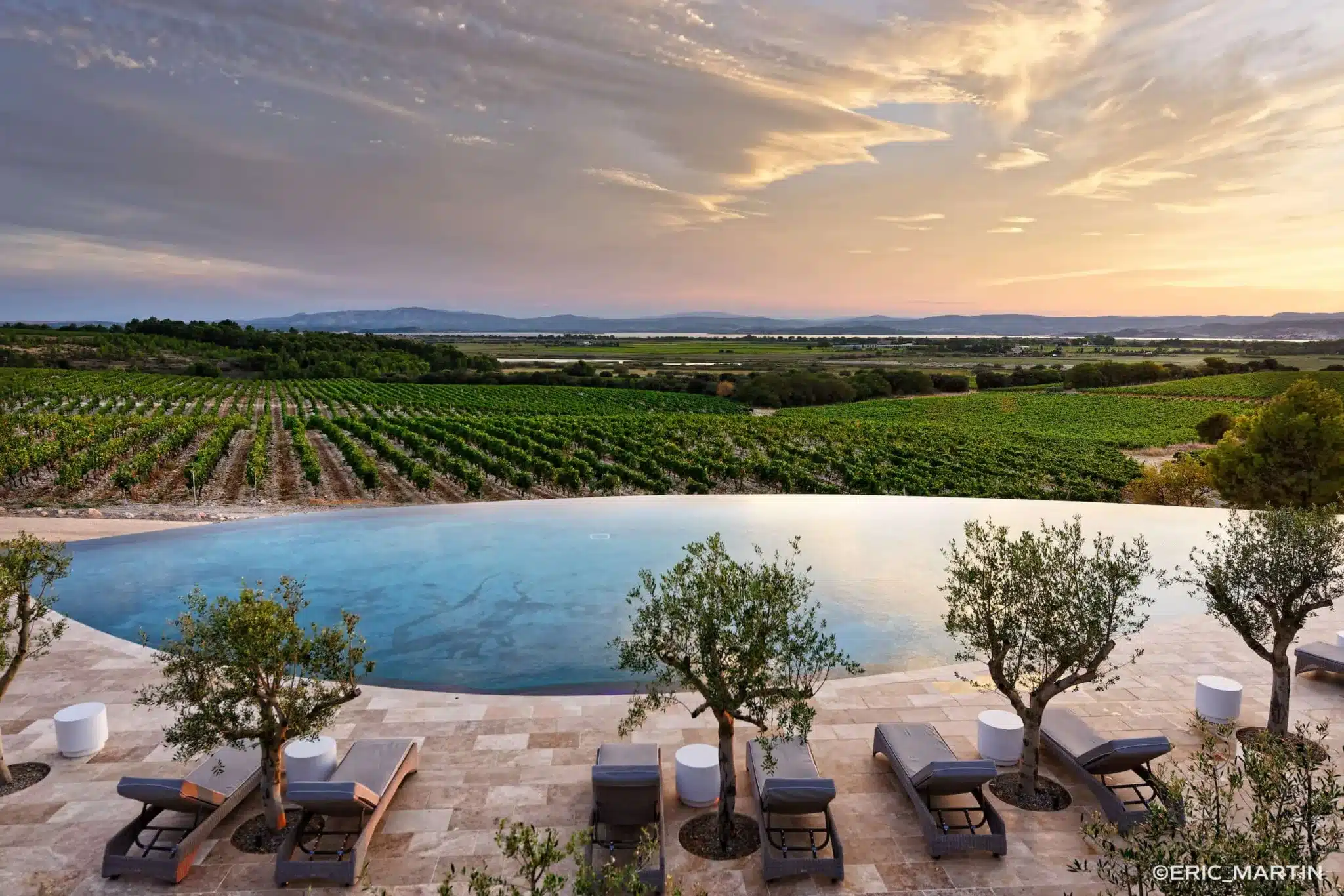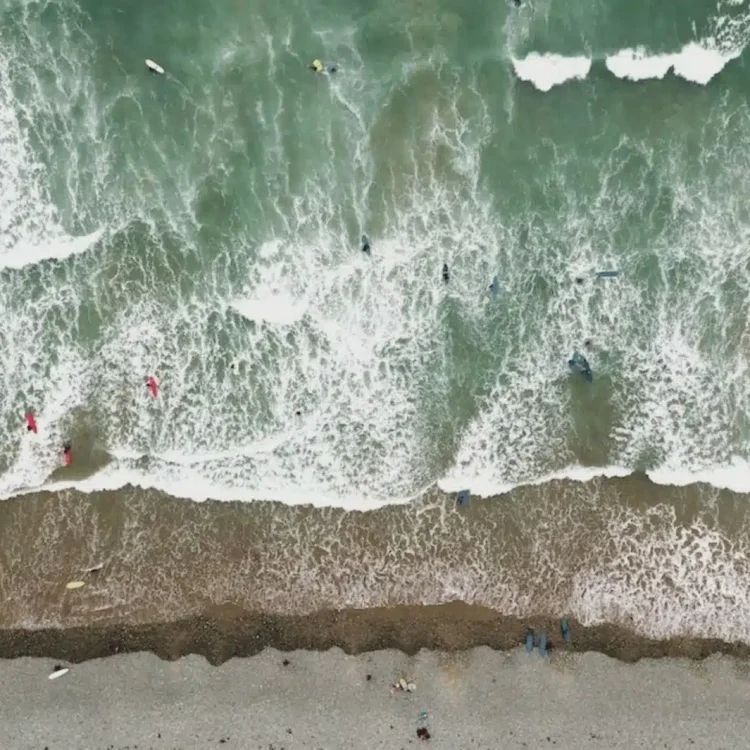How Chateau Capitoul in the Languedoc became a stylish holiday destination combining wine, nature and wellbeing
Words: Pendle Harte
What makes up the perfect day? For me, a dream day would go something like this. Wake up in the south of France to blue skies in a beautiful 19th century chateau. After coffee, cycle a scenic, car-free route to the beach for a swim in the sea, followed by a leisurely seafood lunch – and then another gentle cycle back to the chateau to sample some local wines. Sounds good? If so, a trip to Chateau Capitoul in the Langedoc might create your perfect day too.
Chateau Capitoul is the kind of place that combines simplicity with luxury in a carefully designed way. The site was taken on by charismatic Irish hotelier couple Karl and Anita O’Hanlon and they’ve approached it with huge passion. They took a neglected, rundown chateau attached to a family-run vineyard and a pine forest and made it into a smart destination that features a hotel, two restaurants, a spa, a pool and a working vineyard, along with a collection of holiday homes. The location, in a natural park on the edge of the Massif de la Clape in the heart of the Languedoc, is an area of great natural beauty; it’s a short distance to the beach and within easy striking distance of Narbonne, Beziers and Montpellier.

The new builds are carefully designed to blend into the landscape while creating luxurious residences that feel almost like a village. The model is clever – these holiday homes are all privately owned, and the estate takes care of the holiday lets on behalf of the owners, who generally visit for a few weeks each year. Everything has been designed with careful consideration – the restoration of the chateau, the hotel’s impressive new reception building, the pools and the gardens. Particularly the gardens: when they first bought the site, there was concern from local environmentalists that construction would negatively impact the area’s biodiversity. The area is home to at least one type of endangered lizard as well as bats and countless birds, and any development of the land had to take that into account. And in fact, the new estate and its grounds have more biodiversity now than it did before, thanks to protective measures and a sensitive approach. There are lizard hotels and bat caves, and bird numbers are up. Another concern was water – how to create a newly landscaped plot without using vast quantities of water? The genius solution: a Mediterranean dry garden. There are no sprinklers here, because Capitoul is now home to Europe’s largest dry garden, thanks to a method of encouraging roots to grow so deep that once established – after a year – they require no watering at all.
And what to do here? On the estate there’s a pool and tennis courts (most of the villas have their own private pools too) as well as a spa offering a full programme of relaxing facials and massages as well as a pool, sauna and hammam. Take a bike out – there are regular ones for the cruise to the beach, and electric mountain bikes to take the other way, into the hilly Massif de la Clape. Gruissan is a sweet beach town with a lively market and the seafront is notable for its pink salt flats – don’t miss the excellent salt museum with its brilliant shop selling an enormous range of flavoured sea salts as well as various salted caramels and lots of salt-related bath and beauty products. The huge sandy beach with its huts on stilts might be familiar as the location for the film Betty Blue, and busy seafood restaurant La Cambuse du Saunier is an improbably dreamy spot – rustic and informal but delivering the most delicious array of oysters, razor clams and more, all accompanied by perfectly crusty baguette and crispy, salty chips as well as chilled white wine from Chateau Capitoul. It’s right on the seafront, and there are even tables on a jetty overlooking the pink lake. Back at the estate, take a tour of the winery and learn about the entire grape-to-bottle process. The Bonfils family has been producing wine here for 150 years, and vines have grown here since the 14th century. Wines in the La Clape appellation are a blend of at least two varieties: main grape varieties are Grenache, Mourvèdre and Syrah for red, and Bourboulenc for white.
The O’Hanlons are committed environmentalists and everything is considered. There’s not much beef on the menus – instead they’ll recommend the excellent Black Pork from the Pyrennees. There are Nespresso machines in the rooms, but only because, on balance, they result in less wasted coffee per room, as carefully calculated. They’re also keen collectors and their eye for antiques and decor can be seen in the chandeliers, artworks and furnishings in the chateau and the residences. My room in the chateau’s former attic is spacious, stylish and luxurious, with impressive views across the vineyards and the pine forest. It’s a dreamy spot as a place to linger as well as a base from which to explore the region. There’s more to the south of France than Provence: the Languedoc is beautiful and varied, and Chateau Capitoul offers the very best of the region. It’s a place for a perfect day, and more.
Read more travel reviews here.









